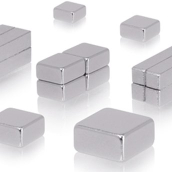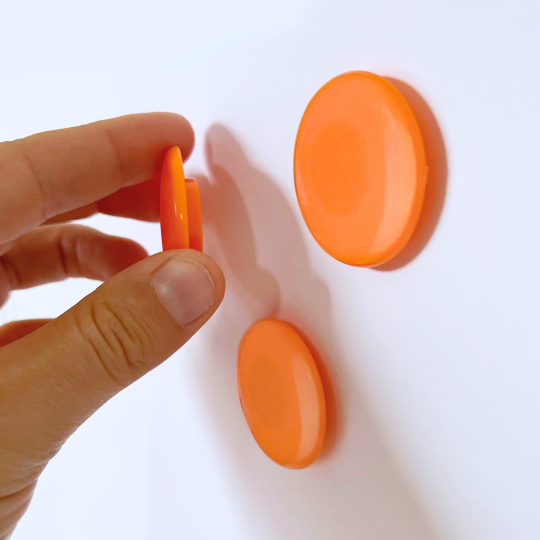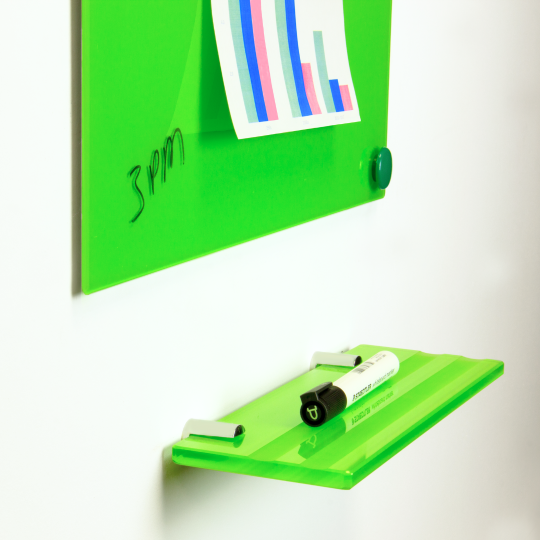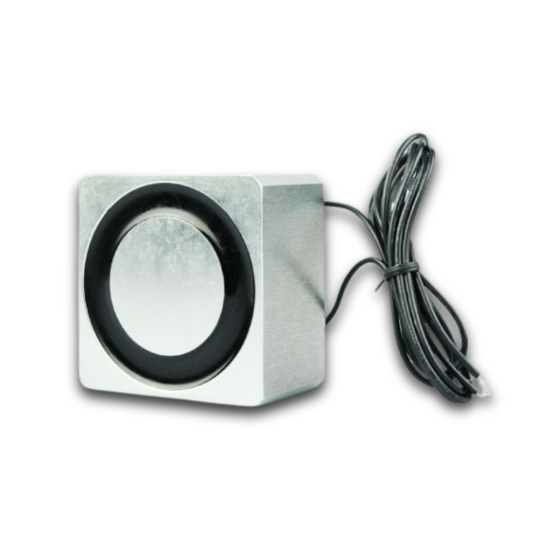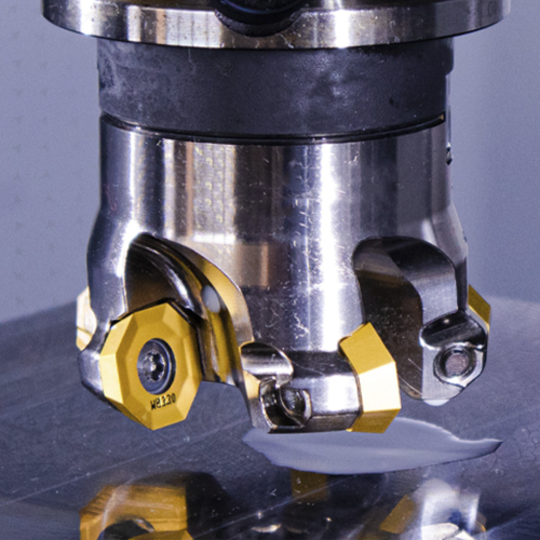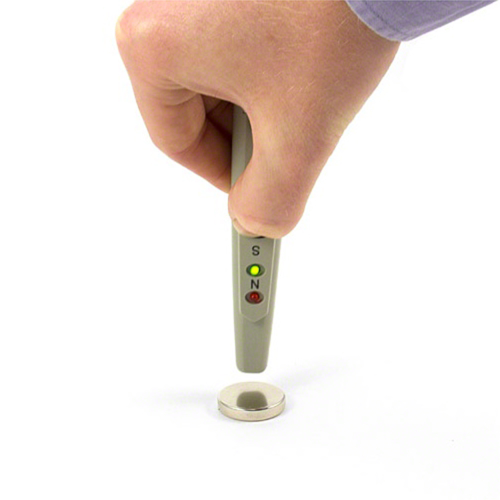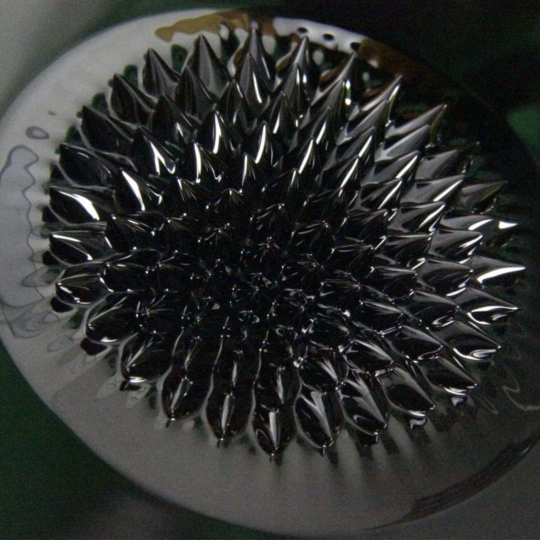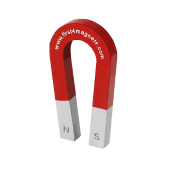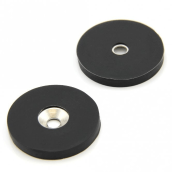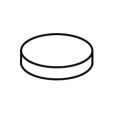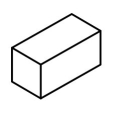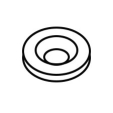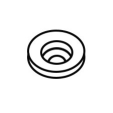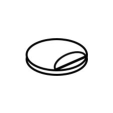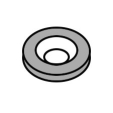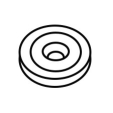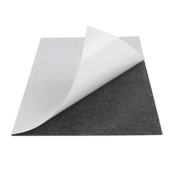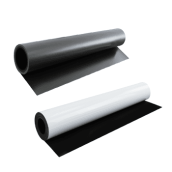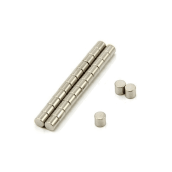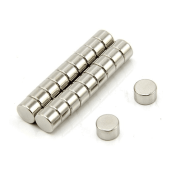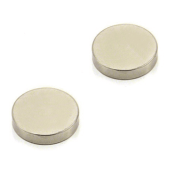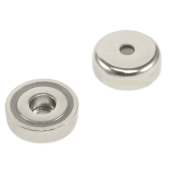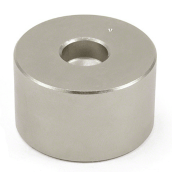How Is The Strength Of A Magnet Measured
When we consider the ‘strength’ of a magnet, there are several measurements that all contribute to a magnet’s strength in different ways, which can often seem confusing. It also depends on what is meant by strength; pulling force and magnetic field strength are often both summarised as strength.
In this article, we’ll describe each attribute that contributes to a magnets performance in turn and answer the question, how is the strength of a magnet measured?
MAXIMUM ENERGY PRODUCT
The maximum energy product of a magnet is measured in Mega Gauss Oersteds (MGOe).This is the primary indicator of a magnets ‘strength’. In general, the higher the maximum energy product value, the greater the magnetic field the magnet will generate in a particular application.
Maximum energy product, also referred to as BHmax is calculated by multiplying a magnet’s remanence (Br) and coercivity (Hc).
REMANENCE
Remanence, measured in Gauss, is described as the magnetism that is left in a magnet, after the removal of the external magnetic force applied to magnetise it. When a material has been magnetised, it has remanence, as the magnetism has at some point been induced by an external magnetic field.
COERCIVITY
The coercivity of a magnet is the energy required to reduce the magnetisation of a magnetised object to zero, which had previously been magnetised to the point of saturation. Essentially, it measures a magnetic material’s resistance to demagnetisation. The coercivity of magnetic material is measured in Oersteds (Oe).
Maximum energy product, remanence and coercivity can all only be measured with a hysteresis graph testing machine which plots a second quadrant hysteresis curve.
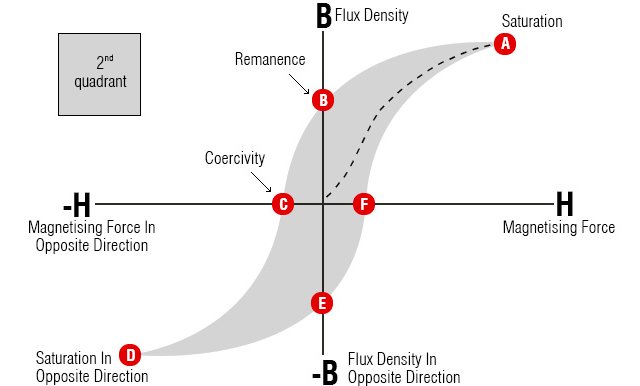
OPEN CIRCUIT FLUX DENISTY
The intensity of a magnetic field, measured in Gauss or Teslas (10,000 Gauss = 1 Tesla), is also a common measurement of a magnets strength as this is a representation of the density of a magnetic field produced by a magnet, known as flux density.
A magnetic field can be visualised as magnetic field lines passing through a magnet along its direction of magnetism. The field strength corresponds to the density of the field lines over a given area. The total number of magnetic field lines penetrating an area is called the magnetic flux density.
The remanence value of a magnet is the flux density held by the magnet whilst it is in a closed circuit. When the magnet is removed from the hysteresis graph testing machine, it is now no longer in a closed circuit and is considered as open circuit. The magnetism falls instantly to a much lower level and this value depends on the ratio between the surface area and its relative magnetic length. Magnets with small poles and long lengths have much higher open circuit flux densities than magnets with large poles and relatively small magnetic lengths.
Open circuit flux densities can be measured using a Gauss meter and hall probe. Open circuit flux densities for neodymium magnets rarely exceed 6,000 Gauss, but because neodymium magnets have a straight line demagnetisation curve, the flux density will rise when the magnet is immersed into a circuit and the distance between north and south is reduced by the introduction of steel. The flux density can therefore rise from the open circuit value to almost the remanence value.
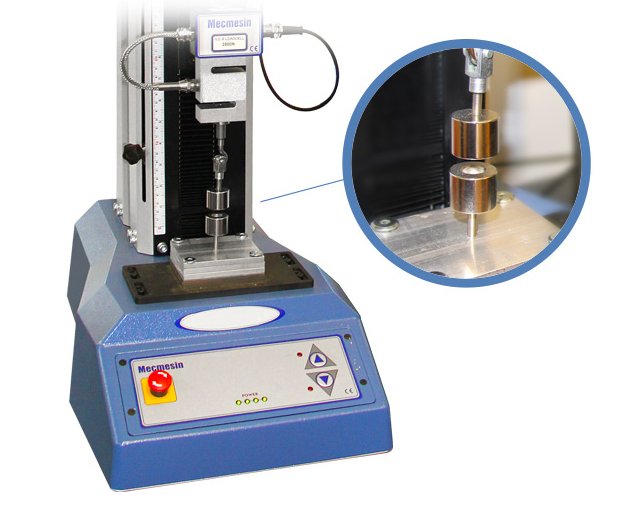
PULL STRENGTH
As neodymium magnets have become more widely used, most manufacturers and suppliers provide a pull strength for each of their magnets to show how much weight a magnet can hold.
The pull strength is the highest possible holding power of a magnet, measured in kilograms. It is the force required to prise a magnet away from a flat steel surface when the magnet and metal have full and direct surface-to-surface contact. The grade of the metal, surface condition and angle of pull all have an impact on the pull strength.
PULL GAP CURVE
A pull-gap curve plots the pulling power of a magnet in direct contact with a thick and flat piece of steel and then through a steadily increasing range of air gaps. All magnets can be tested over a variety of air gaps using a pull-gap testing machine.
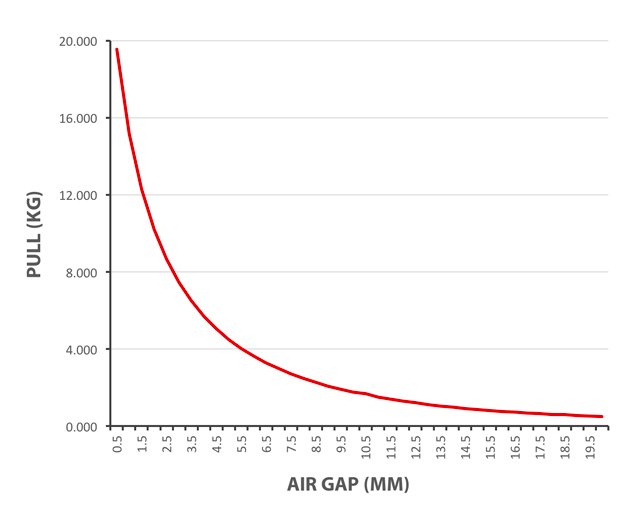
So, when selecting a magnet, the key things to look out for are the maximum energy product value of a magnet, the open circuit or surface gauss value and the maximum pull strength. These three attributes allow you to compare one magnet against another.
The strongest magnets in the world are neodymium magnets which are manufactured in different grades, however, each grade is given a handy name that allows you to instantly judge which magnet is stronger. Commercially available neodymium magnets range from N35 to N55 grade; the number after the letter ‘N’ represents the magnet’s maximum energy product. So, you guessed it, an N55 grade neodymium magnet is approximately 50% stronger than an N35 magnet of the same size.
GAUSS MEASUREMENTS IN COMPARISON
- 0.5 Gauss – Earth’s magnetic field at its surface
- 100 Gauss – A typical refrigerator magnet
- 1,100 Gauss – Magnetic rubber grade Y
- 3,700 Gauss – Ferrite (Ceramic) magnets
- 11,000 Gauss – Samarium cobalt grade 2:17 magnet
- 12,500 Gauss – Alnico grade 5 magnet
- 13,000 Gauss – Neodymium grade N42 magnet

